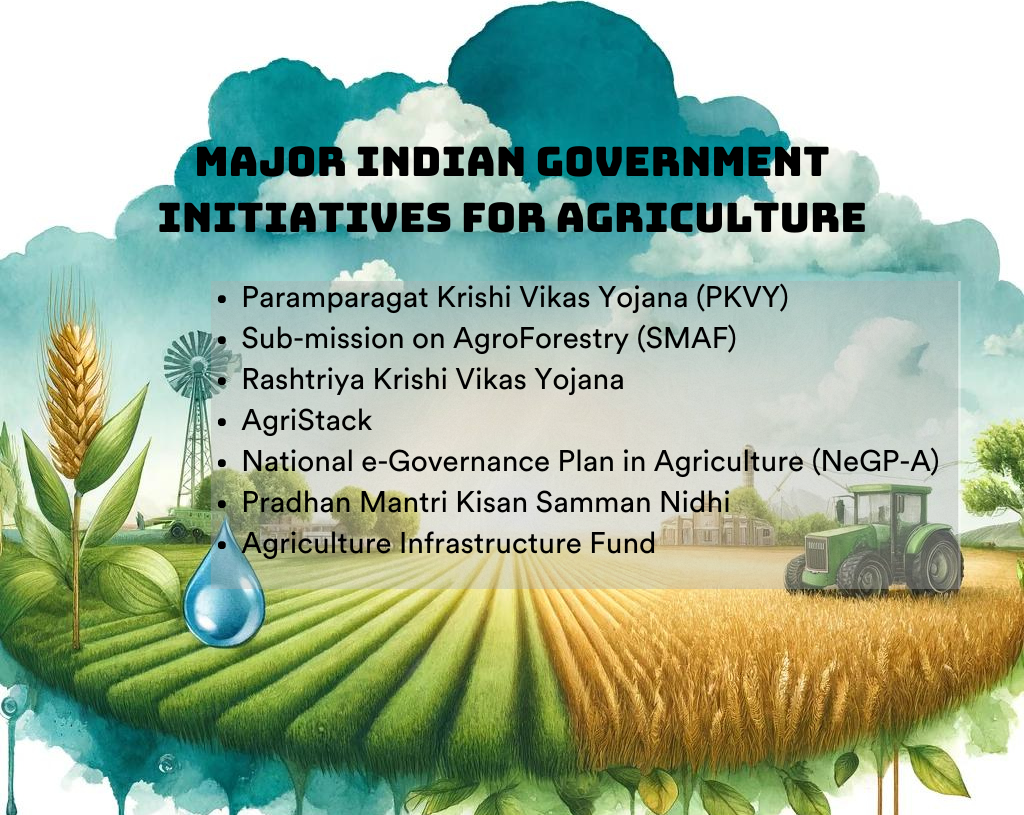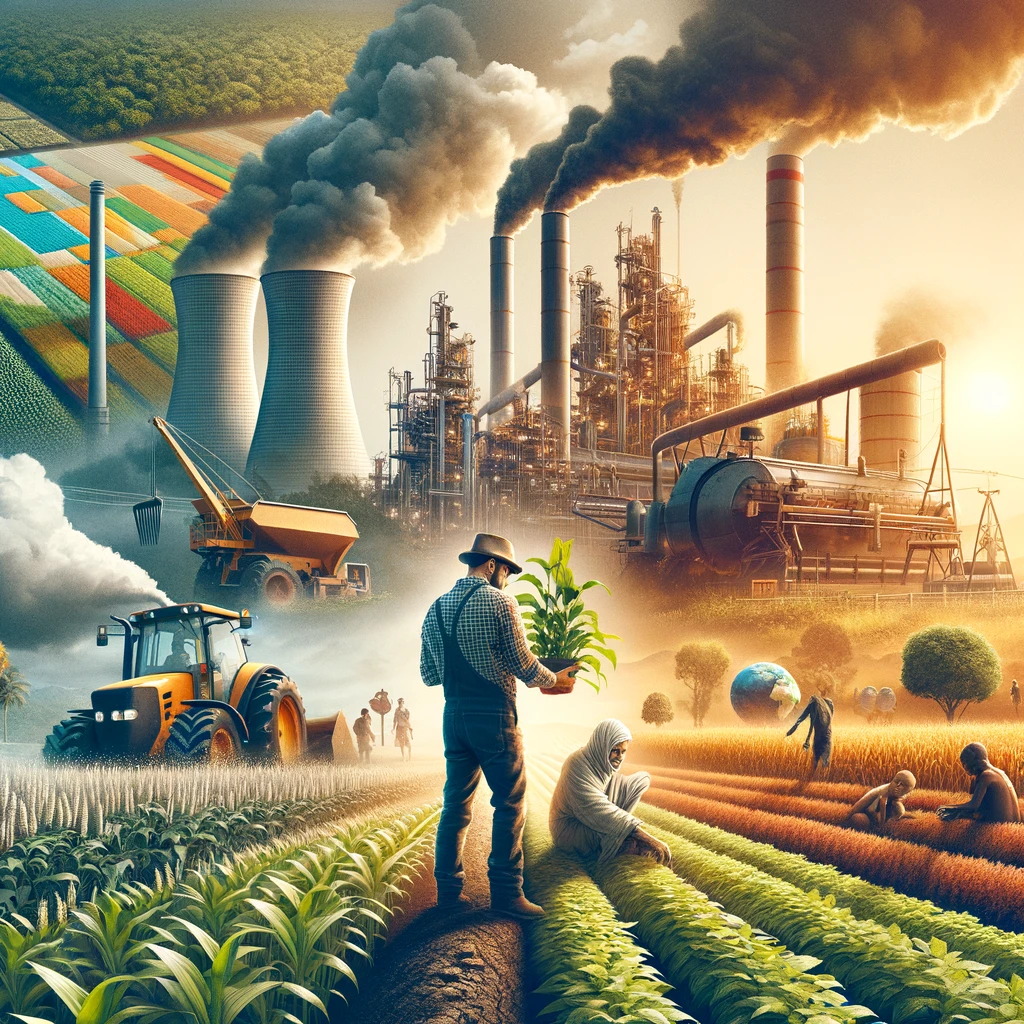As India aims for economic development, the Indian agriculture sector faces numerous challenges. Climate change, small landholdings, global pressure on food prices, and depleting water resources are significant issues. Improving productivity sustainably and inclusively is essential. Therefore, India needs urgent reforms in its agriculture sector.
Origin of the Article
This editorial is based on “Challenge for farm sector: How to share growth gains” published in The Indian Express on 04/06/2024. The article highlights the pressing issues in Indian agriculture and the need for policy reforms.
Relevancy for UPSC Students
Relevancy for UPSC Students: Understanding the challenges and potential reforms in the agriculture sector is crucial for UPSC aspirants. It aligns with the UPSC syllabus on economic development and agriculture and helps in developing analytical skills for the examination.

Why in News
The topic of agricultural reforms is critical for UPSC aspirants due to its recurring presence in both Prelims and Mains exams. The recent editorial highlights the pressing need for policy shifts to address challenges like fragmented landholdings, climate change, and market inefficiencies. Previous UPSC questions have delved into related issues, such as the significance of crop insurance and advancements in agricultural technology, making this topic essential for comprehensive exam preparation.
Significance of the Agriculture Sector in the Indian Economy
The agriculture sector is the backbone of the Indian economy, playing a pivotal role in GDP, employment, food security, foreign exchange earnings, and strategic importance. Its multifaceted contributions make it indispensable for the nation’s overall growth and stability.
Contribution to GDP
Agriculture contributes around 15–16% to India’s GDP, demonstrating its central role in economic development. During the Covid-19 pandemic, the sector showed remarkable resilience, contributing 18.8% of the Gross Value Added (GVA) in 2021–22.
Employment Generation
According to the Periodic Labour Force Survey (PLFS) for 2021–22, the agriculture sector employs 45.5% of the country’s labor force. This highlights its significance in providing job opportunities, especially in rural areas where it remains the primary source of livelihood.
Food Security
With a population exceeding 1.3 billion, ensuring food security is a critical priority for India. The agriculture sector is vital to meeting this demand by producing essential staple crops like rice, wheat, pulses, and vegetables.
Foreign Exchange Earnings
Agricultural exports significantly contribute to foreign exchange earnings, with exports worth over USD 56 billion in 2021. India is the world’s largest producer of milk and pulses and the second-largest producer of wheat and rice, strengthening its global agricultural standing.
Raw Material Provider For Industries
The agriculture sector supplies raw materials to various industries, such as cotton for textiles, sugarcane for sugar, and oilseeds for edible oil. This creates essential economic linkages, supporting numerous industries and contributing to the Ethanol Economy.
Strategic Significance
Self-sufficiency in food production is crucial for national security, reducing dependency on imports. A robust agriculture sector ensures food security during unforeseen circumstances, transforming India from a begging bowl to a net agricultural exporter.
Current Major Challenges Related to India’s Agriculture Sector
The Indian agriculture sector faces numerous challenges that hinder its growth and sustainability, necessitating comprehensive and innovative solutions.
Fragmented Landholdings
Decades of population growth and inheritance laws have led to fragmented landholdings. According to the National Sample Survey Office, 89.4% of agricultural households own less than two hectares, limiting productivity and mechanization.
Menace of Climate Change
Climate change disrupts monsoon patterns and agricultural planning. Heatwaves and cyclones have significantly impacted crop yields and economic stability, highlighting the urgent need for adaptive measures.
Water Scarcity
India’s water crisis is exacerbated by over-exploitation of groundwater and inadequate irrigation infrastructure. This limits agricultural productivity and sustainability, calling for improved water management practices.
Market Inefficiencies and Price Fluctuations
Farmers face challenges like market access and fair pricing, often dealing with middlemen and complex supply chains. This results in significant disparities between farm-gate and consumer prices.
Inadequate Storage and Transportation Facilities
Poor storage and transportation infrastructure leads to substantial post-harvest losses, particularly for perishable goods. This reduces farmer incomes and contributes to food waste.
Limited Access to Credit and Insurance
Small and marginal farmers struggle to access affordable credit and insurance, limiting their ability to invest in new technologies and infrastructure. This hampers their capacity to cope with agricultural shocks.
Soil Degradation and Resource Depletion
Overuse of chemical fertilizers and imbalanced cropping patterns lead to soil degradation. This reduces land fertility and long-term productivity, necessitating sustainable agricultural practices.
Inefficient Agriculture Policy
Complex and overlapping agricultural policies hinder progress. The controversy surrounding Minimum Support Prices (MSPs) exemplifies the gap between policy and reality, impacting farmer incomes and market stability.
Stagnated Growth
Despite employing 42% of the labor force, agriculture contributes only 15% to GDP. This disparity exacerbates poverty and income inequality, particularly in rural areas, highlighting the need for sectoral reforms.
Major Indian Government Initiatives Related to Agriculture
The Indian government has launched various initiatives to support and revitalize the agriculture sector, aiming to address its multifaceted challenges.
National Mission on Sustainable Agriculture
This mission aims to promote sustainable agriculture practices, enhancing productivity and resilience against climate change. It focuses on soil health, water conservation, and efficient resource use.
Paramparagat Krishi Vikas Yojana (PKVY)
PKVY focuses on promoting organic farming and traditional agricultural practices. It aims to improve soil health, reduce chemical usage, and provide farmers with premium markets for organic produce.

Sub-mission on AgroForestry (SMAF)
SMAF promotes agroforestry practices, integrating trees and shrubs into agricultural landscapes. This enhances biodiversity, soil health, and farmers’ income through diversified production systems.
Rashtriya Krishi Vikas Yojana
This scheme aims for the holistic development of the agriculture sector. It focuses on increasing productivity, ensuring better returns to farmers, and addressing regional imbalances in agriculture development.
AgriStack
AgriStack is a digital infrastructure initiative for agriculture. It aims to provide farmers with access to various digital services, including crop advisories, weather forecasts, and market information, enhancing decision-making and productivity.
National e-Governance Plan in Agriculture (NeGP-A)
NeGP-A aims to enhance farmers’ access to information and services through e-governance. It focuses on providing timely and relevant information on crops, weather, and markets, improving agricultural efficiency.
Pradhan Mantri Kisan Samman Nidhi
This scheme provides direct income support to farmers, ensuring financial stability. It aims to supplement farmers’ incomes to meet agricultural and domestic needs, reducing financial stress.
Agriculture Infrastructure Fund
The Agriculture Infrastructure Fund supports the development of infrastructure for the agriculture sector. It aims to build efficient storage, transportation, and processing facilities, reducing post-harvest losses and enhancing market access.
Measures to Revitalize India’s Agriculture Sector
Innovative and sustainable measures are essential to rejuvenating India’s agriculture sector and addressing its multifaceted challenges.
Implementing Agroecological Intensification
Agro-ecological intensification involves practices that mimic natural processes, enhancing biodiversity and resilience. Techniques like permaculture and agroforestry can be promoted to improve sustainability.
Establishing Agricultural Innovation Clusters
Developing agricultural innovation clusters can foster collaboration among research institutions, agri-tech startups, and farmers. This ecosystem can drive innovation and improve agricultural practices.
Implementing Drone-based Precision Agriculture
Drone technology can enhance precision agriculture, enabling targeted crop monitoring and resource application. This improves efficiency and reduces resource waste, benefiting farmers and the environment.
Genetic Editing Techniques for Crop Improvement
Genetic editing techniques like CRISPR-Cas9 can develop climate-resilient and high-yielding crop varieties. This approach offers precise and efficient crop improvement, addressing challenges posed by climate change.
Fostering Public-Private Partnerships for Agricultural Extension
Public-private partnerships can enhance agricultural extension services, providing farmers with localized advice and support. This collaboration can improve knowledge transfer and agricultural practices.
Developing Agri-Logistics and Cold Chain Infrastructure
Improving agri-logistics and cold chain infrastructure can reduce post-harvest losses and enhance market access. Initiatives like “Kisan Rail” can be complemented by other transport modes for efficient distribution.
Model Agriculture Policy
A unified Model Agriculture Policy can guide states in promoting sustainable practices and efficient resource use. This policy framework can empower farmers and ensure a resilient agricultural future for India.
Conclusion
In conclusion, the transformation of India’s agricultural landscape is not just an option but a necessity. Addressing the myriad challenges, from climate change to market inefficiencies, demands innovative and sustainable solutions. As future policymakers, UPSC aspirants must envision an agriculture sector that thrives on inclusivity and resilience. By fostering holistic reforms, we can ensure prosperous livelihoods for our farmers and robust food security for the nation.
| UPSC Civil Services Examination, Previous Year Question (PYQ) Mains Q. Discuss the various socio-economic and ecological issues that the agricultural sector in India is facing. How can the government ensure sustainable agricultural growth in light of these challenges? (2015) Q. Examine the impact of climate change on the agricultural sector in India. Discuss the strategies and measures that can be adopted to mitigate these effects and ensure sustainable agricultural practices. Q. Critically analyze the role of Minimum Support Prices (MSP) in safeguarding the interests of farmers in India. What are the potential drawbacks of the MSP system, and how can they be addressed to make it more effective? |


